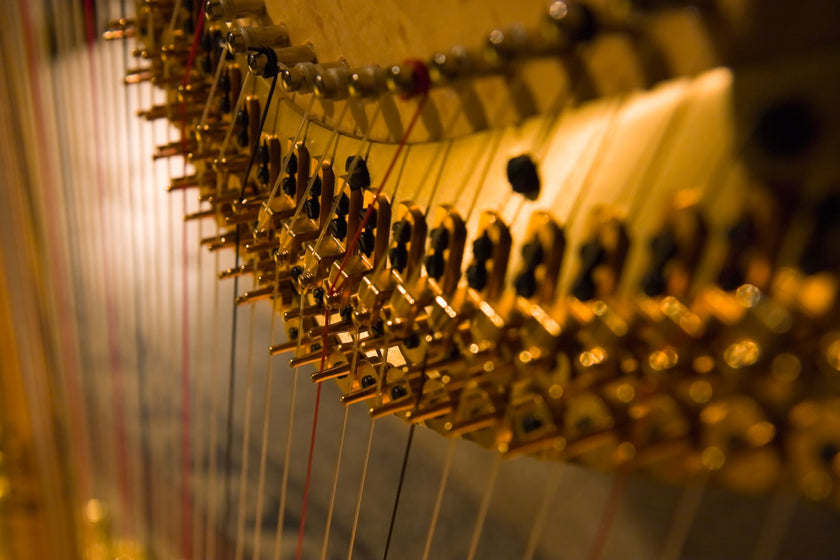The harp has enjoyed longstanding prestige in Ireland. From the time when the Celts first came to Ireland to the late 18th century harpists, had an honorable place among musicians. Perhaps this can be attributed not only to the stringed-instrument’s melodious sounds but also to its age: Of all the musical instruments known today, the harp stand outs as one of the first to be created. It is believed that it was originally developed by modifying a hunting bow. It was also typically associated with the upper class who would have harpists come to their homes to play. Moreover, the instrument is often associated with Christianity and the angels who were depicted as harpists.
This level of honor and exposure helped to make it a symbol in Ireland. In the 16th century a picture of a harp was placed on the country’s currency by Henry VIII of England, who is said to have been a fan of the harp’s alluring music.

Today, the harp is Ireland’s national emblem and remains a symbol that many identify with the country, with scenes of harpists on hillsides often coming to mind. Along with these bucolic notions, it is also found in the logo for Ireland’s most well-known beverage, Guinness, and has even been trademarked by the government of Ireland—furthering its notoriety as a source of national pride.

Want to display a harp symbol in your own home? This Tower Centerpiece was created by famed Belleek Pottery as a part of their 160th Anniversary Collection. It features traditional Irish icons including the harp, shamrocks, a stone tower, and the Celtic cross. The limited edition piece is marked with a special anniversary stamp.
Informational source: International Harp Museum, internationalharpmuseum.org

